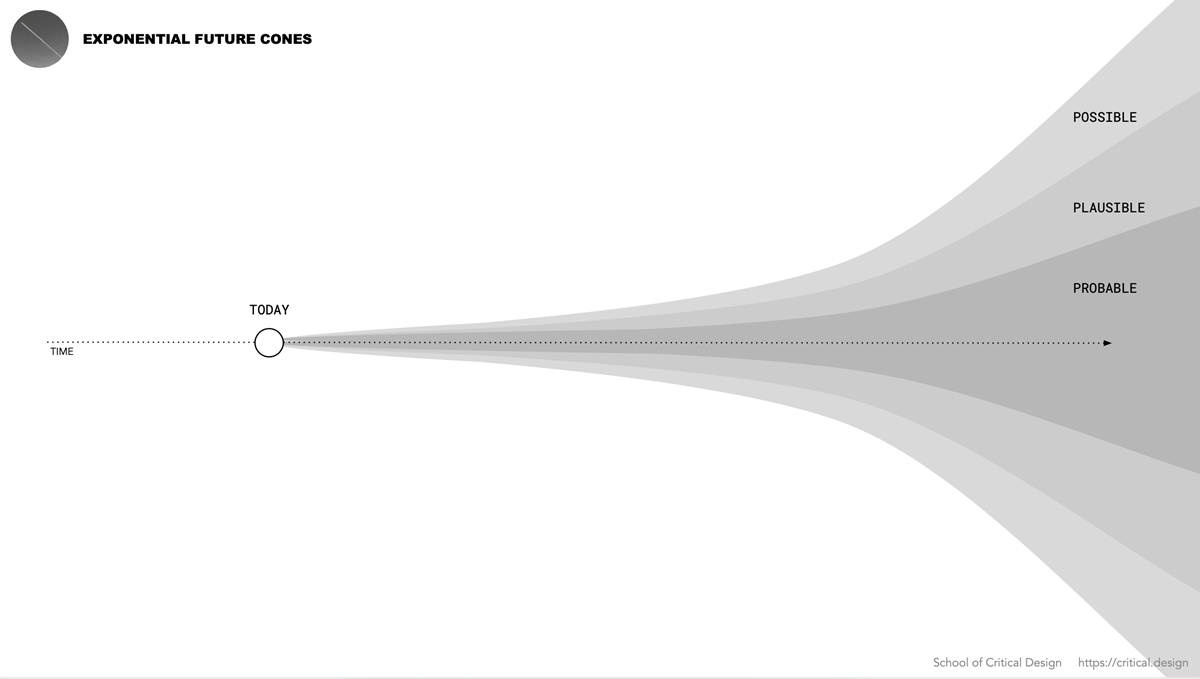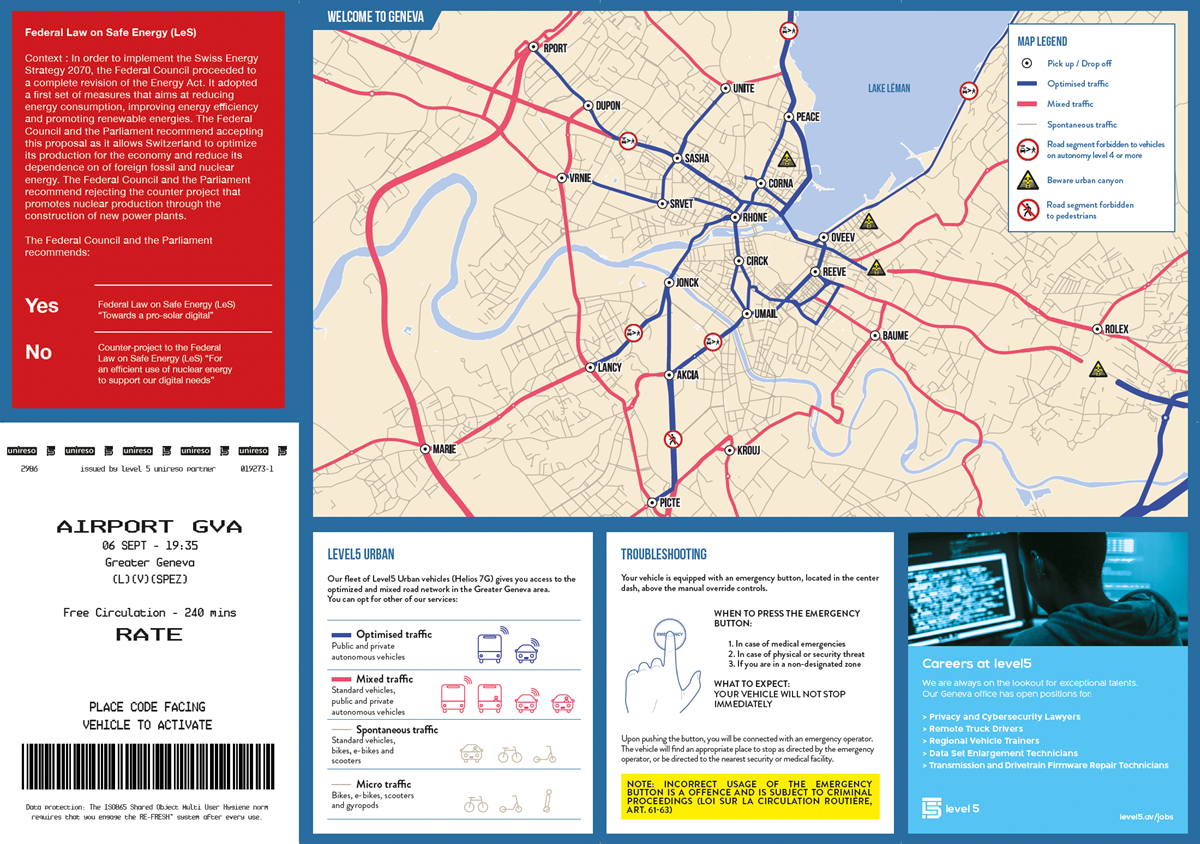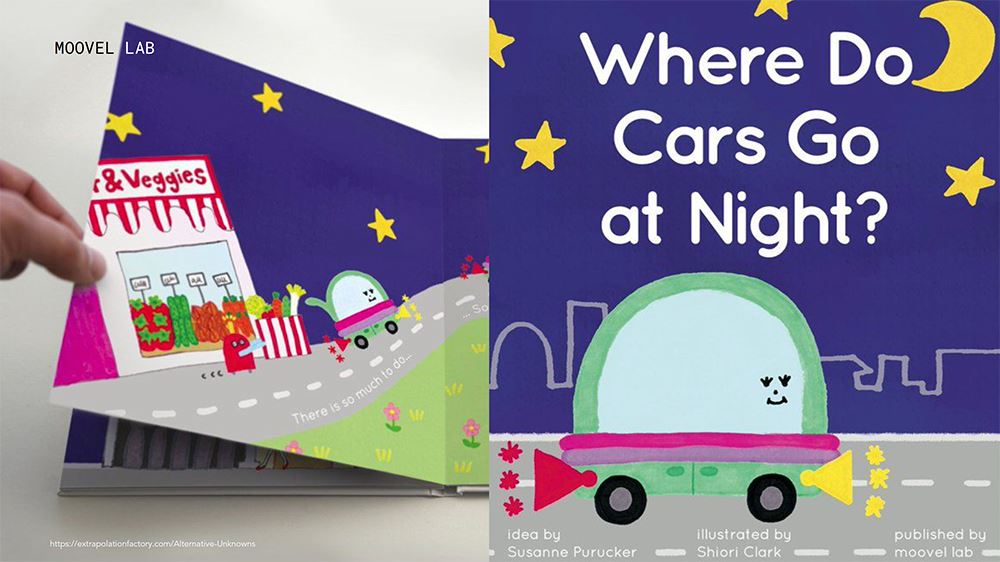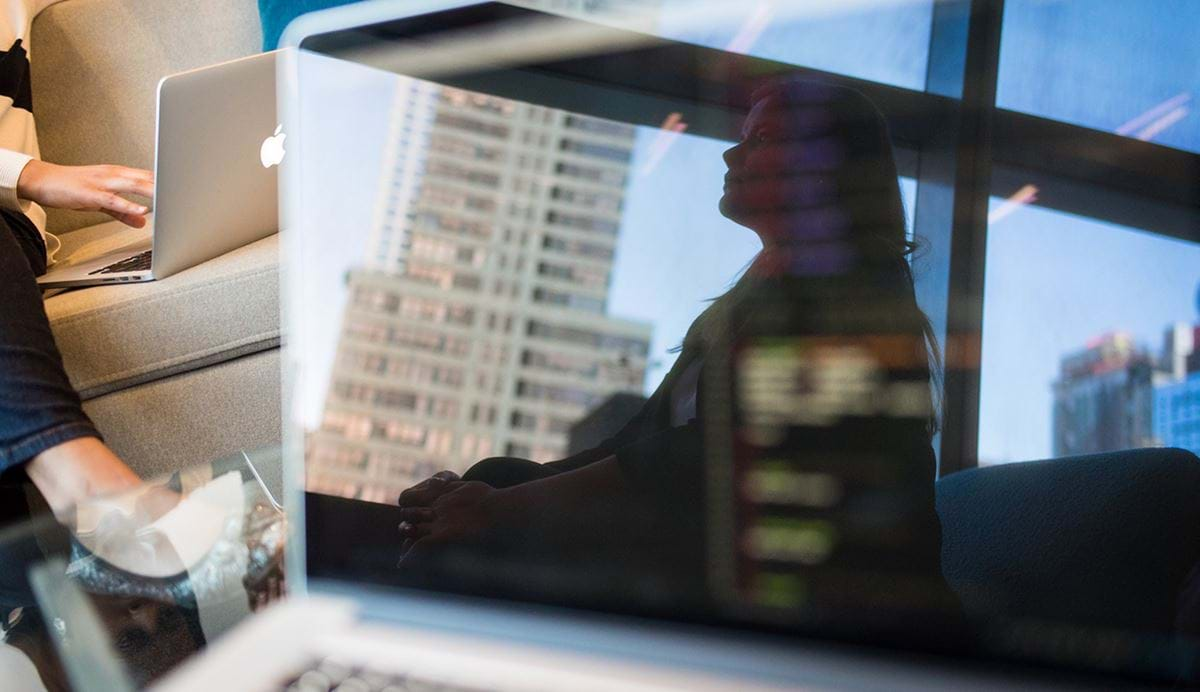How Speculative Design can help us think about the future
4 minute read
Speculative Design is a set of tools designed to help us to explore the future, and the possible consequences of what we design and build today.
Working in technology, we naturally think of ourselves as forward-thinking: in digital transformation and Service Design projects, we are helping our clients take advantage of technology to create better relationships with their customers or service users in the future. We do this with a depth of research and a focus on the humans at the centre of our work, learning about their daily lives, goals, and behaviours.
But what if being truly human-centred isn’t just about looking at human needs today?
“User centricity is incredibly problematic. Focusing on the narrow goals of the user as it relates to the business as it exists today leads us to a narrow view of the opportunity space that we’re working in.”
The School of Critical Design’s J Paul Neeley challenges us with the provocative statement above. He argues that we need to look beyond user needs to explore the impact our designs might have on future societies and of course the people within them.
This leads us to question whether the products or features we launch are the best thing for people both now and in the future, to ask ourselves what sort of future we want, and whether we can have an influence on that through our design work today.
Let’s take pensions for example, a young person enrolled in a pension today may not access that money until the year 2070, that’s an almost 50-year relationship with a pension provider. What will their world look like? What might their challenges, goals and needs be? How can we support them now to give them the best chance later in life? And the big question: how can we do that without knowing exactly what the future might bring?
This all points towards us intentionally looking further afield at a more distant future. This is a challenging ask: as many science fiction films have proven, correctly predicting how our future lives might look is not easy. Just looking at the effect the Covid Pandemic is having on the way we work, travel, and do business shows that there are multiple possibilities for what the future might hold, and that global events can change the course we might have plotted.

The unpredictable nature of predicting the future ( https://www.critical.design )
The methods of Speculative Design embrace this ambiguity and don’t seek to predict an outcome at all. Instead, its aim is to create a possible future scenario as a playground for our thinking; a thought experiment that, instead of attempting to predict the future, helps us to explore the possible consequences of what we design today.
What is Speculative Design?
The School of Critical Design, co-founded by J Paul Neeley and Gemma Jones has created a clear set of tools and a methodology to apply Speculative Design in a practical and meaningful way. Their aim is to help others create organisational impact with a framework that touches on product and service development, organisational change, and systems thinking. This framework allows us to explore scenarios years and even decades into the future, and to see how organisations might respond to future influences.
These future worlds are not entirely disconnected from reality however, they require us to find ‘signals’ – something that we can see happening in the world today, that we can use as a stimulus for sketching out a future reality. For example, the testing of self-driving cars, the move towards remote working, or the uncertainty of climate change could all provide inspiration for us to create possible future worlds.
To further focus our lens, we visualise our future world through the eyes of a specific industry or organisation, and ultimately, the humans that will interact or be affected by it. This allows us to ask focussed questions such as: ‘in a world where employees work remotely for the majority of their working life, what does that mean for the housing industry’.
Once we have our speculative scenarios, we can create designs for those future worlds. They may be simple prototypes, mock-ups, provocative visuals, or more defined service concepts. Importantly, these designs are not our end goal, but rather give us a focus to discuss and react to. Part of the Speculative Design methodology provides a structure for interrogating our ideas and then backcasting – working backwards to explore what might need to happen in order for our speculative design to become a reality.
Making it tangible
This design from Near Future Laboratory is a tourist map of Geneva for someone using self-driving cars. It explores routes, different types of traffic classification, and safety. This design artefact allows us to define and discuss some of the opportunities and challenges associated with this method of transport, and how it fits into our existing infrastructure, without putting so much as a wheel of a self-driving car on the road.

Staying with the theme of self-driving cars, this storybook by Moovel Lab explores a night in the life of Carla the car, and what she might get up to when she isn’t ferrying passengers around. It was used to engage children in discussing ideas around future transport and technology in a fun and accessible way.

Design as a catalyst
Those of us that have come from a traditional design discipline see design as both a process and an outcome. The design method often creates a prototype to be tested and improved until it is ready to be released to the world. Speculative Design flips this on its head. Yes, design is still a process, but the outcome is not a practical product ready for launch.
A speculative design has a different purpose. The examples above exist to provoke thought: to help us imagine and be critical about what we do. It gives us a focus to help us envisage the future our ‘users’ might be living in.
Designing responsibly
Part of the freedom of this approach is that we don’t have to create something positive for it to have value. Our future design might benefit some people but not others, it might bring profit but hold undesirable consequences, or we might choose to push those negative consequences to their limits so that we can understand the potential that our design holds.
Mark Zuckerberg’s early version of Facebook was designed to connect fellow university students in a new way. Almost twenty years on, it has become a significant factor in contemporary politics. The techniques of Speculative Design might have helped Facebook to predict the ways in which the platform might be used and to act more responsibly.
There are similar stories for most of the big tech players; AI-driven services that have turned out to be biased, discriminatory or offensive in ways which their creators clearly did not foresee, but which they could have explored by dedicating some time, the right methods, and by acknowledging that the most well-intentioned technology can have negative consequences once out in the wild.
Speculative Design allows us to challenge our idealistic, optimistic selves with a more critical eye and helps us go beyond ‘how might we’ to ask ‘what if…’
It’s not all about the dark side though. Freeing us of the constraints of the here and now (though not disconnecting from reality entirely) can help us imagine better ways of doing things or futures that we can aspire to.
The key to this process is to allow these future designs to inform and influence our thinking, our design, and our strategy today, and to be mindful as we create them.

Why it matters
J Paul Neeley asks that we look beyond immediate, individualistic, human, user needs to think about the wider and more long-term societal and environmental impact that our designs might have.
As the COP26 climate conference wraps up, many designers are asking themselves what role we play in a sustainable future. A speculative framework that helps us zoom in on multiple different scenarios allows us to examine not just the potential impact on future societies, but the environment they live in too. It is an ideal approach to help us understand the impact of climate change on our businesses and explore the ways in which we might contribute to a more sustainable future.
As technology becomes more sophisticated and as we come to rely on it more and more, we need to ensure that we understand the potential of what we put out into the world, both good and bad. Design now has a bigger seat at the table – with involvement in reshaping services, organisations, and even government policy. We have an increasing impact on the world around us, and a bigger role in the future that we are creating. This puts the onus on us to design responsibly and Speculative Design is an effective tool to help us do this; to prompt us to look further ahead and create designs that help shape a positive future world.
To what extent are we shaping technology, and to what extent is it shaping us? Are we happy with the possible futures we are generating?

